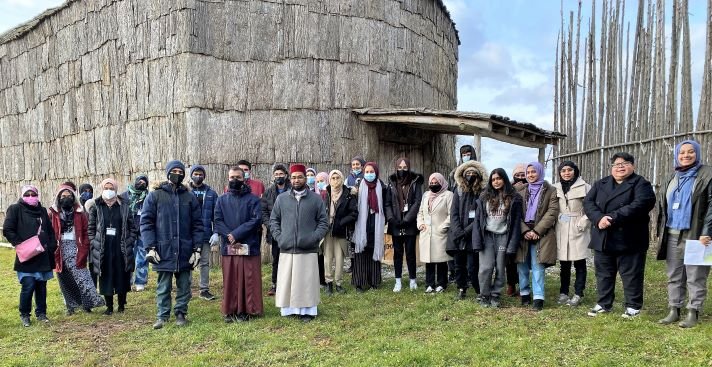This guest post is from Rev. Mark Whitfield, the Pīhopa o te Hāhi Rūtana o Aotearoa, the Bishop of the Lutheran Church of New Zealand. Not only is he a personal friend, but he is a mentor in ministry and a leader who I am fascinated with for his attempts at being a pioneering bricoleur among Lutheran-Christians in New Zealand.
In his own words, Whitfield is, "keen for members of te Hā Rūtana o Aotearoa (the Lutheran Church of New Zealand) to acknowledge the beautiful language of our indigenous people" or "the Māori." More than language, Whitfield is also ambitious to integrate Māori language and culture into the rituals and practices of the Lutheran church.
This post is an example of one of his efforts and is posted here as a case of cultural/religious bricolage, trans-creation, and hybridity between Māori custom and meanings & Lutheran pākehā (people of European descent) rituals and culture -- merging the rāpaki, or "Māori kilt," and the alb, stole, and liturgical vestments of a Lutheran bishop.
His motivation stems not only from the ethnic make-up of the LCNZ, which includes Māori, Pākehā, and other immigrant groups including Chinese, Polynesian immigrants, and more, but also from New Zealand's history. For most of Aotearoa's history, the two primary cultures, Māori and Pākehā, have existed in tension. Conflict and confrontation often prove more common than collaboration. Whitfield is, in many ways, trying to navigate this tension and build bridges between multiple cultures as part of one church.
The shoulder cloaks, or rāpaki, were the principal clothing of the Māori and were woven harakeke worn from waist to knee or sometimes placed upon the shoulders. They are made of a woven base (kaupapa) and hung with tags (hukahuka). I will let Rev. Whitfield tell the rest of this story of "the love of God for the people" in his own words:
Kia tau ki a koutou te atawhai me te rangimarie o te Atua!
願 父 神 所 賜 的 恩 惠 和 平 安 與 你 們 同 在
Grace and peace to you from God!
Shortly after the Church asked me to be Bishop in June 2011, my dear friend Jude Nelson (Te Punga) from Palmerston North told me that she had been called by God to make a Māori cloak for me to wear, especially for formal occasions.
At various times during the past 4 years Jude has updated me on her progress, and each time we have spoken about this, I have felt quite moved at this gesture of love and appreciation for me.
